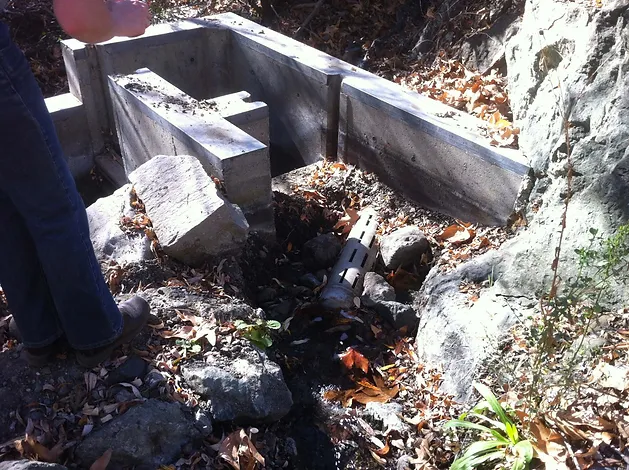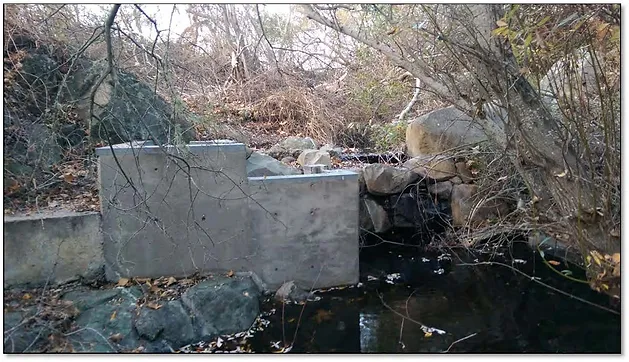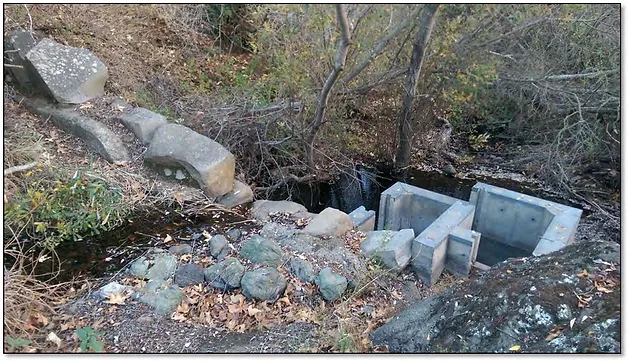Pennington Creek Steelhead Barrier Removal Project
Project Lead: Trout Unlimited
Location of Project: Latitude: 35.34360000, Longitude: -120.73280000
Description of Project: The Pennington Creek Steelhead Barrier Removal Project eliminates a barrier to migration and restores access to critical spawning and rearing habitat in the Chorro Creek watershed in San Luis Obispo County, CA. This project will benefit salmonids listed under the federal Endangered Species Act, specifically threatened steelhead trout (Oncorhynchus mykiss, South-Central California Coast Distinct Population Segment). The Chorro watershed is identified as a Core 2 watershed in NMFS’ South-Central California Steelhead Recovery Plan and this project implements Task CC-SCCS-4.3.
Description of why this barrier is a high priority project: The Recovery Plan identifies migration barriers at water diversions as a critical limiting factor to steelhead recovery in the Chorro Creek watershed. This project will remove a high-priority barrier on Pennington Creek at the diversion structure operated by the Rancho El Chorro Outdoor School, and replace it with a new diversion and reconstructed stream channel designed according to the CDFW California Salmonid Stream Habitat Restoration Manual and meeting all NMFS and CDFW requirements. Once completed, the Project will allow all life stages of steelhead to reach the high-quality perennial habitat refugia in the upper reaches of Pennington Creek.
The project will restore full access to 2.3 river miles of high quality habitat with persistent year-round flow in the Pennington Creek watershed. In addition, the project will reduce the risk of juvenile steelhead becoming stranded downstream of the barrier during the annual dryback of the stream during the summer dry season. Finally, the project will create a learning site that will be incorporated into the ecological curriculum of the Rancho El Chorro Outdoor School, and used to educate approximately 6,000 kindergarten through 7th grade students per year.
The name(s) of the recovery plans and the specific task that name this barrier as a high priority: South-Central California Steelhead Recovery Plan (NMFS 2013). This project implements Task CC-SCCS-4.3 . This project is further consistent with the California Department of Fish and Wildlife’s Steelhead Restoration Management Plan for California, which identifies barriers that prevent steelhead from reaching upstream perennial habitat as a limiting factor. The project has been identified as a high priority in conversations with regional DFW staffers including Margaret Paul and Matthew Michie.
DFW’s FRGP funded project design, and NOAA has funded the majority of project implementation. Both agencies have deemed the project to be a high priority for remediation (Margaret Paul, DFW, pers. comm. 2015, Stacie Smith, NOAA, pers. comm. 2016).
The California Fish Passage Forum has nine overall objectives. This project will help to address:
- 1. Remediate barriers to effective fish migration.
- 5. Coordinate funding mechanisms to remove fish passage barriers.
- 6. Promote state and federal permit coordination and streamlining.
- 7. Facilitate plans to monitor and evaluate fish passage restoration effectiveness to ensure accountability.
- 8. Promote state and national policy and actions that support fish passage improvement in California.
- 9. Implement education and outreach activities, targeting both the general public and fish passage practitioners.
Anadromous fish species that benefit from this project: Steelhead/rainbow trout
Miles of stream opened as a result of project implementation: 2.3 miles.
Location and distance in stream miles to downstream river structures, and whether each structure represents an insignificant, partial, or total barrier to fish passage: There are no known downstream barriers.
Location and distance in stream miles to upstream river structures, and whether each structure represents an insignificant, partial or total barrier to fish passage: The only potentially significant downstream barrier is Approximately 1.5 mile downstream at PAD 700040 at the Highway 1 crossing, which has been treated by installing baffles but is believed to be a partial barrier to upstream migration at some flows. Snorkel surveys by CCC have found adults upstream of the crossing. DFW addressed this barrier in review of the FRGP design grant and determined it did not detract from the benefits of the instant project. NOAA reached the same conclusion in funding this project. A 2003 survey by Taylor & Associates did not find any other significant barriers on Pennington Creek. The project will restore 2.3 river miles of high quality habitat with persistent year-round flow in the Pennington Creek watershed. The next upstream barrier, which lies 2.3 miles above the Project, is the 200′ long boulder cascade (PAD ID: 705752) which represents the upstream limit of anadromy.
How will the project be evaluated and measured for success: This project has a monitoring plan to assess success in achieving deliverables.



